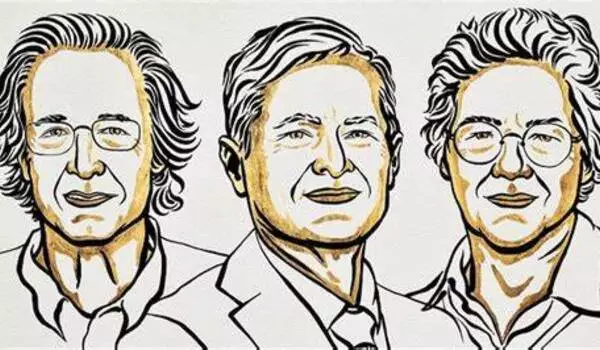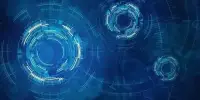Pierre Agostini, Ferenc Krausz, and Anne L’Huillier were awarded a prize of £823,000 for their work on electron dynamics in matter. Three scientists have been awarded the Nobel Prize in Physics in 2023 for their work on producing incredibly short pulses of light that can be used to analyze events occurring inside atoms and molecules.
Pierre Agostini of Ohio State University, Ferenc Krausz of the Max Planck Institute of Quantum Optics, and Anne L’Huillier of Lund University will share an 11 million Swedish kronor (£823,000) prize announced by the Royal Swedish Academy of Sciences in Stockholm on Tuesday.
This year’s Nobel Prize in Physics is the 117th to be awarded since 1901. L’Huillier is the prize’s fifth female recipient. L’Huillier, who served on the Nobel Committee for Physics from 2007 to 2015, stated at the press conference that she was lecturing when she received the call informing her that she had won.
“The last half-hour of my lecture was difficult to do,” she stated. “As you know there are not so many women that get this prize, so it is very, very special,” she stated. The prize was given “for experimental methods that generate attosecond pulses of light for the study of electron dynamics in matter,” according to the Nobel Committee.
The three Nobel Laureates in Physics 2023 are being recognized for their experiments, which have given humanity new tools for exploring the world of electrons inside atoms and molecules. Pierre Agostini, Ferenc Krausz, and Anne L’Huillier have demonstrated a way to create extremely short pulses of light that can be used to measure the rapid processes in which electrons move or change energy.
An attosecond is a mind-bogglingly tiny length of time. According to the committee, the number of attoseconds that fit into one second – a period roughly equivalent to a heartbeat – is the same as the number of seconds since the beginning of time. However, it is these timeframes that regulate electron behavior. An electron takes around 150 attoseconds to orbit the nucleus of a hydrogen atom, while electrons hop from one atom to another in a few hundred attoseconds.
This year’s winners devised experimental methods that use interactions between infrared laser light and a noble gas such as neon to produce pulses of light on the attosecond timescale. These pulses of light can be used to study the movements of electrons, and hence processes occurring within atoms and molecules.
Prof Mats Larsson, a member of the Royal Academy of Sciences, noted attosecond pulses had a number of important applications, with the technology offering the potential for ultra-fast switching of a material such as silicon dioxide from being an insulator to being a conductor.

“This is an important field because it gives you possibilities to develop very fast electronics based on these short pulses,” he stated. He also mentioned molecular fingerprinting of biological material as one application under consideration. Very short pulses of light, for example, might be used to stimulate molecules in a blood sample, according to Larrson. The molecules’ infrared light may then be monitored with attosecond precision, allowing scientists to detect minute changes in the blood.
“By doing this, there is the hope in the future that you will be able to capture whether a person has developed, for example, lung cancer, so that you have a very sensitive method, and if you can diagnose cancer at a very early stage treatment will be much more successful,” Larsson said.
Scientists have also proposed that attosecond light pulses could be used to examine quantum processes involved in photosynthesis in plants or to influence chemical reactions – a topic known as “attochemistry.”
Dr. Amelle Zair of Kings College London, who has worked with L’Huillier, expressed her excitement and pride in the trio’s victory. “Attosecond physics is a fascinating research area where powerful light interacts with matter to its most fundamental time scale, the attosecond time scale,” she stated.
Prof. Jon Marangos of Imperial College London, director of the Blackett Laboratory Laser Consortium, expressed his delight at the award. “This is a really well-deserved award to some of the pioneers of the field of attosecond science,” she stated. “This capability is allowing us to investigate the very fastest electronic dynamics in matter that underpins photophysical and photochemical processes in all phases of matter.”
Many diverse fields have possible applications. It is critical in electronics, for example, to understand and control how electrons behave in a material. Attosecond pulses can also be utilized in medical diagnostics to distinguish distinct substances.
















